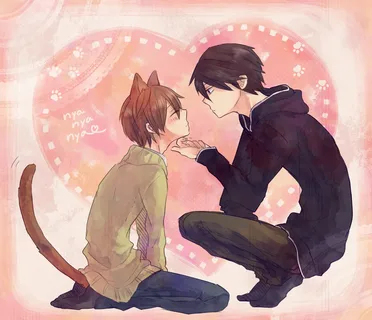Introduction
Yaoi anime, also known as “Boys’ Love” or “BL,” is a genre that has cultivated a dedicated global fan base. Yaoi anime engrosses its audience in romantic and often intimate connections between male characters, taking inspiration from Japanese manga and literary works. Within the expansive world of yaoi anime and manga enthusiasts, yaoi has matured into a significant subculture, exploring themes of love, desire, and the complexities inherent in same-sex relationships.This comprehensive article will explore the inception, central themes, representation, and societal impact of yaoi anime, shedding light on its contributions to LGBTQ+ representation in the media.
I. Origins and Development of Yaoi Anime
Yaoi emerged in Japan during the late 1970s and early 1980s, predominantly in the form of doujinshi (fan-made comics). These early works were created by female fans for female fans, and often featured romantic relationships between male characters from existing manga or anime series. The genre gained traction and eventually evolved into standalone manga and, later, anime series.
II. Themes and Characteristics
A. Central Themes
Romance and Relationships: At the core of yaoi anime lies the exploration of romantic relationships between male characters. These relationships can range from innocent crushes to passionate love affairs, often exploring themes of emotional vulnerability, trust, and intimacy.
Conflict and Drama: Yaoi anime frequently incorporates elements of conflict, either internal (dealing with one’s feelings) or external (societal or personal challenges to the relationship). This adds depth and complexity to the narrative.
B. Tropes and Conventions
Seme and Uke Dynamics: One of the defining characteristics of yaoi is the portrayal of roles within the relationship. The “seme” is typically the more dominant, assertive partner, while the “uke” assumes a more submissive or receptive role. These dynamics, while not always rigid, form a common trope in yaoi storytelling.
Non-Explicit to Explicit Content: Yaoi anime can range from subtle, romantic interactions to explicit portrayals of intimacy. Some series focus more on emotional connections, while others explore physical aspects of the relationships.
III. Representation and LGBTQ+ Themes
A. Positive Representation
Yaoi anime provides a platform for the exploration of same-sex relationships, offering positive portrayals of LGBTQ+ characters. It offers a space where these relationships are treated with the same depth and nuance as heterosexual ones.
B. Escapism and Fantasy
For many viewers, yaoi serves as an escape into a world where LGBTQ+ relationships are not stigmatized or marginalized. It allows fans to experience romantic narratives that may not be as readily available in mainstream media.
IV. Impac+ Representation in Mediat on LGBTQ
A. Breaking Taboos
Yaoi anime has played a role in breaking taboos surrounding LGBTQ+ representation in media, especially in more conservative societies. By presenting same-sex relationships in a positive light, it has contributed to greater acceptance and understanding.
B. Influence on Mainstream Media
The influence of yaoi is not confined to niche fandoms. Elements of yaoi storytelling, such as complex relationships and character dynamics, have found their way into mainstream media, contributing to a broader representation of LGBTQ+ characters.
V. Criticism and Controversies
A. Stereotyping and Tropes
Critics argue that yaoi sometimes reinforces stereotypes about gay men, particularly in its portrayal of seme and uke dynamics. It is important to approach these works critically and acknowledge the diversity within the LGBTQ+ community.
B. Female Gaze and Fetishization
As yaoi is primarily created by and for female audiences, there is a risk of fetishizing or romanticizing same-sex relationships for the consumption of a heterosexual audience. It is crucial to engage with yaoi with sensitivity and respect.
VI. Notable Yaoi Anime
A. Gravitation
B. Junjou Romantica
C. Sekaiichi Hatsukoi
D. Love Stage!!
Conclusion
Yaoi anime stands as a unique and influential genre within the realm of anime and manga, offering a space for the exploration of same-sex relationships. It has played a crucial role in LGBTQ+ representation and acceptance, while also prompting important discussions about stereotypes and fetishization. As yaoi continues to evolve and diversify, it remains an essential part of the broader conversation surrounding LGBTQ+ representation in media. Engaging with yaoi with a critical but open-minded perspective allows us to appreciate its contributions to the broader tapestry of human relationships depicted in art and storytelling.
